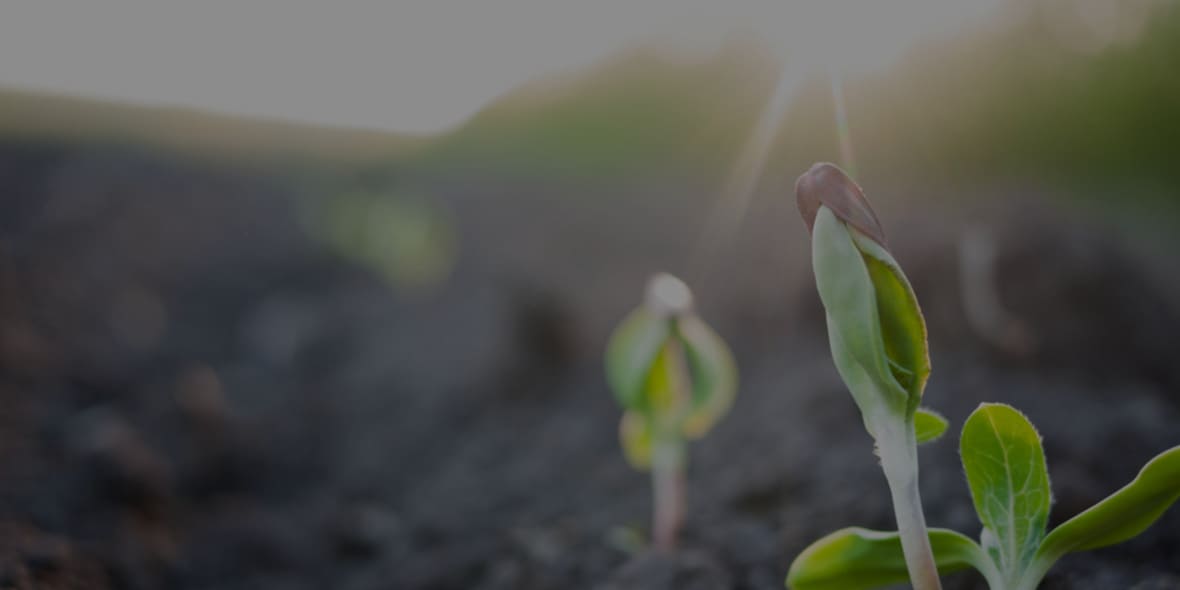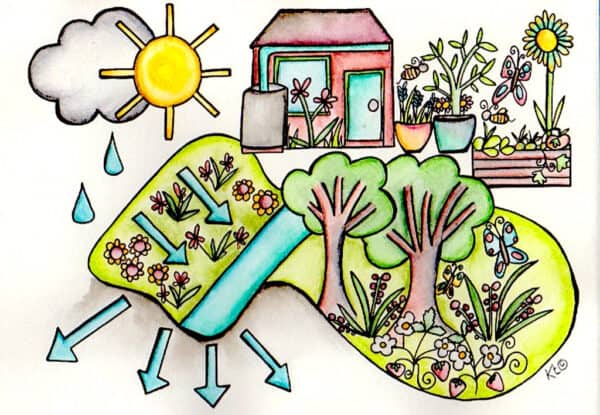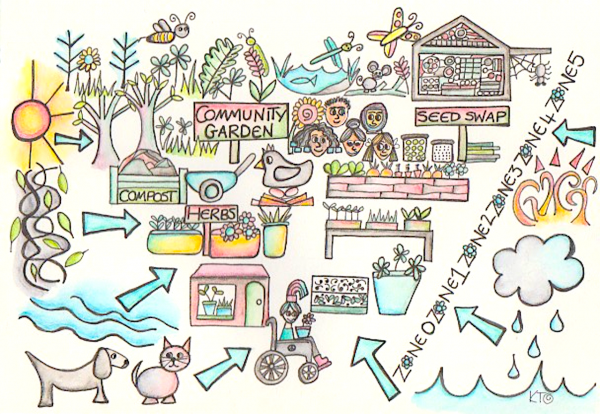
Whole Systems Design, defined
In permaculture we use the terms “whole systems design,” and “whole system design” (no s) interchangeably, to describe the overarching approach we use to make sense of a project. It is what it sounds like it is: a design that includes your whole system. Your system, your garden’s system, your water supply’s system, your climate’s system, your economic and social systems, and so on.
Permaculture is a design science, and in order to use if effectively, we have to become systems thinkers, and cultivate a designer’s mind. The purpose of today’s class is to open those doors for you.
Here’s a mini-lecture about whole systems design (please forgive my primitive animations!)
Close your eyes and imagine your own “whole system.” It’s easy to let it overwhelm you, to get lost in huge fantasies of what you will do…one day when you win the lottery and buy a huge farm. Don’t do that. Be here now, Sister bear! Part of what makes permaculture so special is that it provides us with a tangible framework around which to plan and implement whole systems designs in real life, on any scale.
How do we do this, you ask?

Patterns, Principles, Process, Place
On your permaculture journey, you will encounter a multitude of complex ideas and expandable, exponentially powerful concepts. This can be a joyful ride, even when it’s overwhelming and confusing! However, if you’re anything like me, you enjoy a bit of structure now and then.
A permaculture whole systems design can be simplified into four basic parts:
- Patterns. We use patterns in nature to guide us. We mimic them, we obey them, and we work with, rather than against them. We develop our multi-phase plans based on patterns in our lives, and we design our gardens based on patterns in our soil, climate, and water cycles.
- Principles. Observing and adhering to natural patterns is one of the core principles of permaculture, and there are so many more. Whenever we are stuck on a decision, struggling with how to prioritise different aspects of a project, or dealing with interpersonal conflict, we rely on our principles to guide us.
- Process. To provide a tangible structure to all of these visions and bold ideas, we need a specific, measurable, actionable result-driven, and timebound process. That’s where GOBRADIME comes in. I use GOBRADIME in all of my work.
- Place. We’re all connected to a place, and some of us are connected to several. No matter what your goals are, you still have to sleep, eat, get warm, make friends. In its most basic essense, every design comes back to place, and placement.

GOBRADIME Permaculture Design Process
I wrote about GOBRADIME in my book, Food Not Lawns, which you now can read for free!
Permaculture practitioners also use other processes besides GOBRADIME, such as Looby MacNamara’s design web. But since GOBRADIME is my jam, that’s what we will use in this course.
- GOALS What is your specific, measurable, achievable, relevant, timebound, ecological, and rewarding (S.M.A.R.T.E.R.) goal for this design?
- OBSERVATION Use all of your senses to learn as much as you can about the design problem/challenge.
- BOUNDARIES Choose, find, change, negotiate, and establish your boundaries, both visible and invisible
- RESOURCES Everything is a resource, and everything has a need. Tap into the waste stream and turn pollution into abundance.
- ANALYSIS Deep thought and careful consideration of the information accumulated thus far. Take your time but don’t get analysis paralysis!
- DESIGN Phase planning, overlays, patterns to details. Create a realistic, logical plan of action that considers all of the above information.
- IMPLEMENTATION Use a task-based process that moves the design from idea to reality, one step at a time.
- MANAGEMENT Monitoring, Maintenance, Messes, Mistakes. This is the place where you learn more and discover new problems to solve.
- EVALUATE & ENJOY Take a nap in the hammock, then get out there and share what you’ve learned. Then, do it all again!
Whole Systems Design: Try the Paradise Design Game
- Step 1: Make a list of every component you think you might want to include in your whole systems design. Vegetable garden? Orchards? Food forest? Solar hot water? Wind power? Workshop? Animals? Whatever you want, make a list (or, use index cards if you want to spread out!)
- Step 2: For each item on your list, note which of the other components this item could somehow connect to. Does your shower connect to your garden? How so? Does your kitchen connect to your chicken coop? Where? And so on.
- Step 3: Then, play with drawing it out. Don’t worry about drawing maps to scale or getting all the details! Think of it more like a game, and make a drawing of your silly ultimate fantasy whole system design.
Want to learn more about this and other topics related to permaculture, sustainability, and whole-systems design? We offer a range of FREE (donations optional) online courses!
Relevant Links and Resources about Whole Systems Design
Again, all we can do is scratch the surface of this topic for you… but hopefully you’re inspired to go deeper on your own. Here are some resources to get you started:
Don’t miss this great article about How to Think Like an Ecosystem.
Here’s a super-useful video from the Autodesk Sustainability Workshop, who also happen to make an excellent free app that you can use for all of your design artwork.



